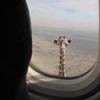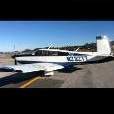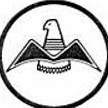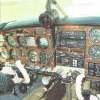-
Posts
799 -
Joined
-
Last visited
-
Days Won
15
WardHolbrook last won the day on September 18 2015
WardHolbrook had the most liked content!
About WardHolbrook
- Birthday 11/16/1950
Profile Information
-
Gender
Male
-
Location
Layton Utah
-
Interests
Flying, hunting, fishing, reloading, amateur radio, classic cars, and boating - all of the typical vices.
Recent Profile Visitors
2,741 profile views
WardHolbrook's Achievements
-
I figure that over the past 50 years I've made close to 15,000 landings and I think that I've finally discovered the secret to making good landings, every time, in any airplane. In the beginning, I figured that it had to do with maintaining a stabilized approach and proper airspeed control; but obviously, that wasn't it. Then I worked up a theory that added planetary alignment and moon phases to the equation and I was getting closer. I finally put it all together when i figured out how to hold my mouth! You have to hold your mouth just right and the planets have to be in proper alignment and the moon has to be in the proper phase, all of that in addition to flying a nice smooth stabilized approach and maintaining the proper airspeed. If you get a greaser other than when you're doing all of that, you're just lucky. Seriously, when it comes to landings, it is all about a stabilized approach and proper airspeed control. As a long-time CFI, I note that it's not uncommon for little things to creep in to our personal techniques and SOPs over time - things that we might not even realize that we're doing. Frequently, it's flying too fast. 1.2Vso to 1.3Vso is plenty fast as you're crossing the proverbial fence. A lot of us habitually approach on the fast side then we as a knot or two for the wife and kids and a knot or two for this and another couple of knots for that. I don't care what you're flying - that's sloppy airspeed control and will screw up your landings in just about any airplane. The other thing I see quite a bit of is pilots using poor techniques to compensate for bad techniques. I've seen pilots who fly their approach too fast resort to things like only using partial flaps and/or bleeding off the flaps in the flare. The best recommendation I can give you is to find a Mooney savvy CFI and go spend an hour with him. It's something that we all really ought to do more often. The obligatory BFR is really too long to go between recurrent training sessions.
-
I've never heard anyone complain about their aircraft being too big, having too much power or being too fast.
-
The big caveat when it comes to flying a twin is that when that engine quits on you, you had better have made the required investment in training and have the prerequisite level of skill and proficiency to avoid turning the airplane into little more than a lawn dart. Period. A properly flown twin operated by a proficient pilot within its limitations is inherently safer than a single. If they are not operated that way, they are more dangerous. Period. I'd guess that the majority of the non-professional light twin drivers and many of the "pros" would be safer in a single. It takes a lot of effort to gain the necessary proficiency and even more to maintain it. That's dang tough to when your recurrent training involves little more than a basic flight review with a CFI every couple of years and you’re only flying a 50 to 100 hours a year. It also takes judgement and discipline to operate your twin in a manner that doesn't severely compromise the limited OEI performance capabilities of the typical light piston twin. Just like in a single, you can play the odds all you want in your light twin, but never forget that now you've got two engines so you've got twice the likelihood of a failure in any given period of time. In a twin, it's all about competency, not just currency and the only way to achieve and maintain proficiency is through a structured recurrent training program. If you're going to fly a twin, you need to budget the time and money to do it right and it ain't going to be cheap.
-
Believe it or not it was 2008. Basler Aviation in Oshkosh did it. You've got to wonder how the DC-3 survived flying in all types of weather for 75 years without it.
-
Pop Quiz... In what year did the DC-3 receive flight in known icing certification? A. 1937 B. 1939 C. 1943 D. 2008
-
I retired last year after a 35 year career flying corporate jets. I spent 15 of those years flying for a company up in the Pacific NW. Our company was based in Oregon and when it comes to icing, few places will equal what you'll find up in the Pacific NW - with all of the moisture from the ocean and cold air coming down from the north, those Cascades generate as much ice as you'll find anywhere. I've had my share of icing encounters up there and it's nothing that you'd want to mess around with unless you have the proper equipment and the skill and experience to use it properly. One of the problems with icing forecasts is that they're often wrong which means that icing is really where you find it, when you find it. This can lead to guys not taking it seriously after all, how many times can you yell "wolf" before people don't take you seriously? Big mistake. I've also flown in my share of icing in FIKI equipped light aircraft and I have no qualms about doing so; however, the rule about always leaving yourself a way out always applies. Ice is one of those hazards that can and will kill you if it's not respected and dealt with properly. I had a highly experienced friend killed in a FIKI twin Cessna he was flying, it was winter time and he got into some icing over the Cascades. He failed to take action soon enough and it simply overwhelmed him. I think that for a non-FIKI aircraft up in that part of the country, conservative is the only way to go - no amount of ice is acceptable. It's not just the ice that builds up on the wings, it's also the ice that forms on the propeller blades. Ice distorts the airflow and destroys the wing's lift. It does exactly the same thing when it forms on the prop. The resultant loss of thrust only exasperates your problems. (Robert Buck, in his book Weather Flying, discusses flying in ice. It's worth your time to review what he has to say about it.) The bottom line is ice is one of our deadly enemies and must be treated as such which means that there will be times during certain months of the year that a wise and prudent pilot in a non-FIKI airplane will just have to sit it out. Be safe my friend.
-

Do you know who this is?
WardHolbrook replied to sleepingsquirrel's topic in Miscellaneous Aviation Talk
It almost looks like it could be a Comanche - except for the cowling. The highway markings don't look like what we'd see in the US. I'm guessing it's some European aircraft. -
Take it from a guy who's owned several airplanes and has been married to the same woman for almost 44 years... Take a hard look at what your mission will be. Thoroughly examine every aspect of each aircraft's performance and comfort features factoring in equipment and airframe/engine times. Then once you've dissected every last detail and analyzed every possible question and performed several thousand (at least) "what if's" then and only then will you be safe in choosing what ever airplane your wife likes best. (Hopefully, it will be either a Bonanza or a Mooney.)
-
Check everything - the rigging, the tach, manifold pressure gauge, engine baffling, air filter, mag timing, gear doors, look for induction leaks, in other words, check pretty much everything. The airplane is getting close to 40 years old and this stuff needs a thorough IRAN from time to time. 10% slower than the average M20J is a lot and certainly needs to be addressed. My bet is that there is more than one thing going on so keep looking until you've gone through it all.
-
Just heard the news that Southwest Texas Aviation has been sold to a new owner. The new owners are JD and Laura Casteel. They're good people and can use the support of the Mooney community.
-

Back up charts/navigation in Glass Cockpit
WardHolbrook replied to L. Trotter's topic in Modern Mooney Discussion
Amen, and just for good measure install ForeFlight on your iPhone as well after all, if one backup is good, two must be even better. -
I don't think that's a crazy thought at all. There are still plenty of bizjets out there using 20 to 25 year old Collins and Honeywell glass that is still very serviceable and with no end in sight.
-
If you have to ask you can't afford it.
-

Noise canceling headsets, how good are they ...really!
WardHolbrook replied to nels's topic in General Mooney Talk
That's what I was told by a couple of audiologists as well. I was fortunate, back in 1975 when I started flying for a living I was given a headset as a gift and I've worn them ever since. The company I was flying for back in 1988 sent all of the company pilots to an audiologist to get base lines established. We also had to take a dB meter up in the cockpit with us to get the cockpit noise levels. (The Lear 35 was extremely loud up front when you had the windshield bleed heat on.) That's when they bought us each one of the 1st generation noise cancelling Bose headsets. We used those for a few years then switched over to various David Clark products. Bottom line is that after 49 years and 15,000 hours I can still hear. Hearing loss is accumulative and irreversible. You can skimp on some things, but one thing you should never skimp on is your headset. Buy the best one you can. I'd rather have a used good one than a new mediocre/poor one. I've know guys who bought "well used" David Clarks and sent them back for refurbishment and ended up with essentially new headsets for a fraction of the new price. Finally, headsets are like motorcycle helmets, they do you no good unless you use them. -
What is "Oxygenized, not pressurized"? Whatever it is, it doesn't sound good.










